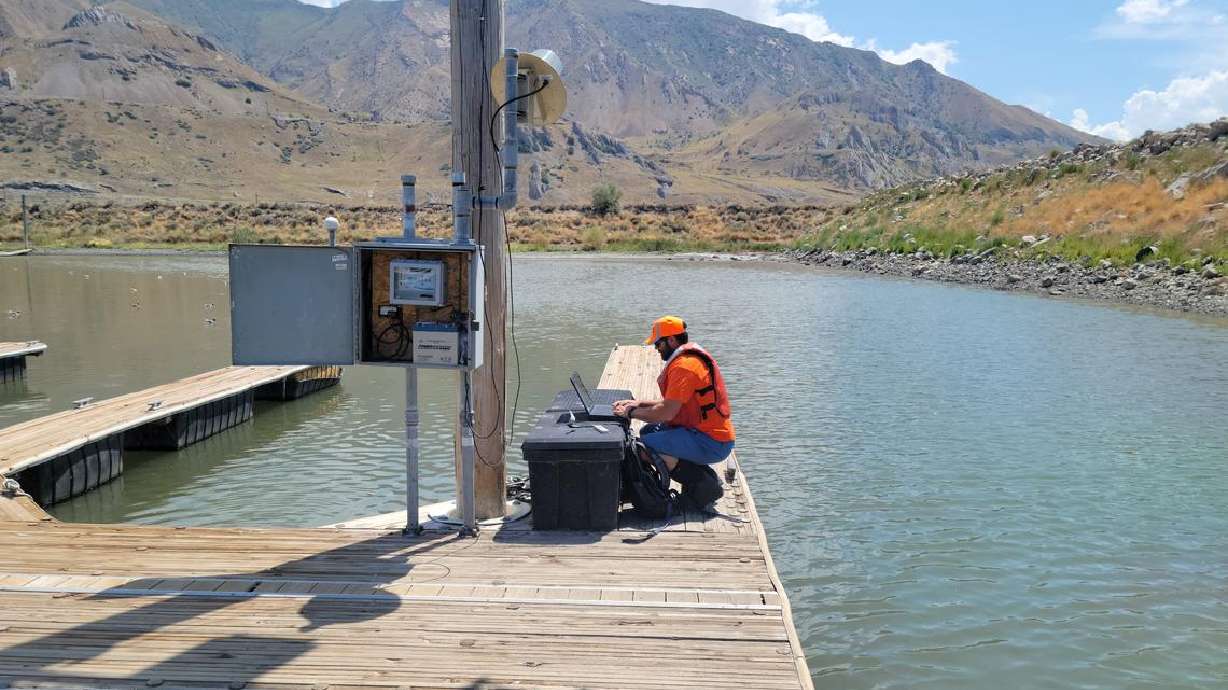Estimated read time: 2-3 minutes
This archived news story is available only for your personal, non-commercial use. Information in the story may be outdated or superseded by additional information. Reading or replaying the story in its archived form does not constitute a republication of the story.
SALT LAKE CITY — Water levels at the southern portion of the Great Salt Lake have reached a new record low and there's an expectation that water levels will continue to decline in the coming months, federal scientists said Saturday.
The levels collected at the Saltair gauge location registered an inch below the previous record set in 1963, according to officials with the U.S. Geological Survey. The agency's Great Salt Lake water level data goes back to 1847, the same year pioneers reached the Salt Lake Valley.
The new low was expected any day, given the state's ongoing drought — now considered at least "extreme" in almost every part of Utah, per the U.S. Drought Monitor — and years of water diversion that's kept some tributaries from dumping water into the lake. The record was even briefly broken earlier this month.
Levels at the site are also expected to continue to decline in the coming weeks and months.
"Based on current trends and historical data, the USGS anticipates water levels may decline an additional foot over the next several months," said Ryan Rowland, the USGS Utah Water Science Center data chief, in a statement Saturday. "This information is critical in helping resource managers make informed decisions on Great Salt Lake resources. You can't manage what you don't measure."
The new low comes as scientists said just last week that they fear that the dried-out lakebed could result in it becoming a future ecological nightmare. Brian Steed, Utah Department of Natural Resources executive director, added that the new record low shows why it's important to come up with ideas that can help preserve the lake, especially as the state's population continues to grow and consume water that would otherwise end up in the lake.
@USGS_UT confirms that the south arm of the #GreatSaltLake has reached a new historic low elevation. "The Great Salt Lake has been gradually declining for some time, current drought conditions have accelerated its fall to this historic low," said DNR Director Brian Steed. (cont.) pic.twitter.com/yGLW7q5z1y
— Utah DNR (@UtahDNR) July 24, 2021
"Ecological, environmental and economical balance can be found by working together as elected leaders, agencies, industry, stakeholders and citizens," he said.
Meanwhile, the USGS said it's not just the Great Salt Lake setting new records. It reports that 77 streams across Utah, or nearly two-thirds of the streams they've kept track of for at least 20 years, are at new record lows.

In its weekly report, the Utah Department of Natural Resources also listed most of the state's reservoirs at below 60% capacity.









